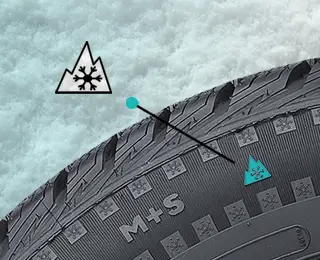How to Choose Winter Tires: Complete Buying Guide & FAQs
Every winter, drivers consider their snow tire options. If you live in an area that doesn’t get more than a touch of winter weather, a set of all-season tires will likely be enough to keep you safe. Or if you get several light snowstorms that blanket the roads, all-weather tires could do nicely. But for those who brave ice and snow on a regular basis, choosing the right winter tires (also known as snow tires) can be the difference between confident control and getting stuck on the side of the road. Here are some answers to the most common snow tire questions we get at Les Schwab.
Why Winter Tires Matter
Snow tires are designed to help you maintain control on snow- and ice-covered roads. The enhanced traction of today’s winter tires includes unique tread patterns that help prevent skidding and increase grip in the snow. The tread also includes a special rubber compound that remains flexible in freezing temperatures, helping grip the road, snow, and ice. All-season and performance tires get rigid in colder weather, reducing their overall usefulness in winter conditions. The combination of traction and rubber compounds found in winter tires helps reduce braking distances and increase your overall safety.
How to Choose the Right Winter Tires
Choosing the right winter or snow tires depends on where you drive, what you drive, and the winter weather your region gets on a regular basis. Let’s take a look at the types of winter tires, tire size, compatibility with your vehicle, and more.
Tire Types and Performance Ratings
Winter tires are most often available without studs. Studless winter tires are designed to offer exceptional grip on snow and ice. But for added grip and control in the worst winter conditions, studded snow tires, or tires that allow for the addition of studs, can be a good choice. What are studs? Studs are lightweight, small metal spikes that are staggered and inserted across the tread of a tire. These studs protrude slightly from the rubber tread surface, helping break through packed snow and ice-covered roads to give you better traction.
Performance ratings, including the Three Peak Mountain Snowflake (3PMSF) symbol on a tire’s sidewall, mean the tire has been tested and proven to offer additional traction in snow, ice, and slush.
Size, Compatibility, and Durability
The size of the winter tires you choose should match your vehicle’s specifications, or at least fit the vehicle. You can find that information in your vehicle owner’s manual or stop by Les Schwab. Our professionals can show you all of your snow tire options. These specifications include your vehicle’s load index and speed rating. Finally, carefully consider the durability of any winter tires. When you buy snow tires at Les Schwab, they come with America’s Best Tire Warranty, including 100% road hazard damage replacement with no expiration and our 60-day satisfaction guarantee.
Rubber Compounds and Tread Design
The tread design and rubber compounds found in today’s premium winter tires work together to keep you in control when facing winter-covered roads. The rubber compound in winter tires remains flexible in cold temperatures, enhancing traction and grip while the tread is designed to dig deep and grip the snow and ice while sipes (small channels etched into the rubber and tread) move water and slush away from the tire.
Frequently Asked Winter Tire Questions (FAQs)
There are a lot of good questions about winter tires. Let’s take a look at some of the more common ones we get at Les Schwab.
What Makes a Good Snow Tire?
A good winter tire includes the 3PMSF (Three Peak Mountain Snowflake) icon on the side of the tire, indicating it has met the criteria necessary to be considered a traction device. Additionally, snow tires that excel in winter conditions include a specialized rubber compound that keeps them flexible in freezing conditions along with deep tread that helps keep you in control.
What is the Difference Between Winter Tires and Snow Tires?
There is no difference between snow and winter tires. Those are just two descriptions for the exact same tires. Whether you use the word snow or winter, those tires are designed to stay flexible in temperatures below 40º F. This flexibility helps increase grip on snow and ice for added control and braking. In contrast, all-season and summer tires are designed to work best when temperatures are above 40º F. However, all-season and performance tires will quickly become rigid and reduce their ability to grip as temperatures drop. This can cause longer braking distances and loss of control.
Do Winter/Snow Tires Really Make a Difference?
When driving on snow, ice, or a combination of the two, winter or snow tires can make a difference. Winter tires are specifically designed with tread and a rubber compound that stays flexible as temperatures drop below 40º F. All-season tires cannot offer that kind of traction in freezing temperatures. Get to know the differences between all-season and winter tires.
Do I Need Four Winter Tires or Just Two?
For the best traction and control, it’s important to install snow tires on the front and rear. Installing snow tires on just the front or back of your vehicle might not offer the control and braking you need to stay safe. Driving with just two winter tires can cause unpredictable results for safety and performance on winter roads. Read about the dangers of installing just two winter tires.
Are M+S Tires Suitable for Winter Driving?
Mud and snow (M+S) rated tires do have an aggressive tread that can deliver good traction in many conditions. However, they’re not specifically designed for winter driving and might not deliver the traction, control, and short stopping distances provided by a set of snow tires. That’s because the rubber compound in M+S tires does not remain flexible in freezing conditions and is not considered a traction device. Plus, the tread is designed for mud, rocks, and deep snow — not snow and ice found on mountain pass highways. For safer driving on snow or ice, choose tires with the Three-Peak Mountain Snowflake (3PMSF) symbol, signifying they meet specific winter performance guidelines.
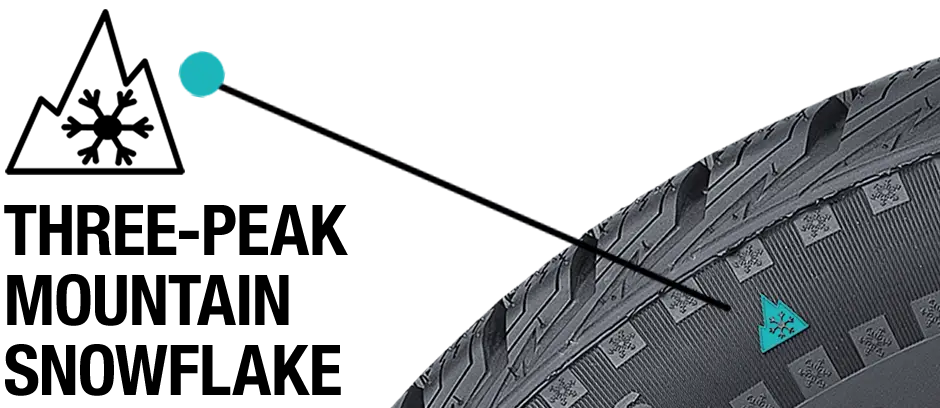
Should I Choose Studded or Studless Winter Tires?
There are some key differences between studded and studless winter tires. Studless tires work great on slush and packed snow thanks to their wide and deep grooved tread and rubber compound that stays flexible at or near freezing temperatures. Studded tires feature lightweight, small metal spikes (studs) that are staggered and inserted across the tread inside 1/8″ pinholes. These studs protrude slightly from the rubber tread surface, helping break through packed snow and ice-covered roads to give you better traction. However, there are limits to when you can use studded tires. Each state has their own set of rules. See the studded tire regulations guide for specifics.
Can I Use Chains Instead of Winter Tires?
Chains and tire socks are NOT a replacement for snow tires in terms of overall safety and convenience. While tire chains and tire socks help provide added traction when winter road conditions are at their worst, you are limited to slower speeds when in use, and neither should be used on bare pavement. In some cases, traction devices (including chains) are mandatory for safety. Find a set of snow chains for your vehicle at your local Les Schwab. Learn how to install quick-fit chains.
How Are Winter Tires Different from All-Season Tires?
While all-season tires are designed to keep you in control in a variety of conditions, including some light snow, the rubber compound in those tires is designed for heat and mild climates. Additionally, the tread is designed to only move water away from the tire, not snow or slush.
Winter tires are designed to remain flexible in freezing temperatures, helping them grip the road, snow, and ice. These tires also have a higher “void-to-lug” ratio compared to all-season tires. This means there are larger grooves between the tread blocks (the lugs). The tread blocks also have irregular, sharp edges to cut through the snow and provide added grip. Finally, some winter tires allow for the addition of studs for improved ice traction.

What are All-Weather Tires? Are They as Good as Winter Tires?
While all-weather tires have many of the similar features as a winter tire, including snow readiness with the 3PMSF designation, they are not a match for a dedicated set of snow tires. The benefits of an all-weather tire include year-round use (similar to an all-season tire), including better tread life and a quieter ride. When compared to all-season tires, all-weather tires are a good fit for those who live in an area that gets some winter weather, including a few inches of snow and plenty of rain.
Is It Okay to Buy Used Winter Tires?
Before you jump on that set of “lightly used” winter tires, check three things carefully. Verify they are the right size for your vehicle, that the tread depth is good (or at least adequate for safety and winter performance), there is no uneven wear, and that they are all the same tire (you don’t want mismatched snow tires on your vehicle).
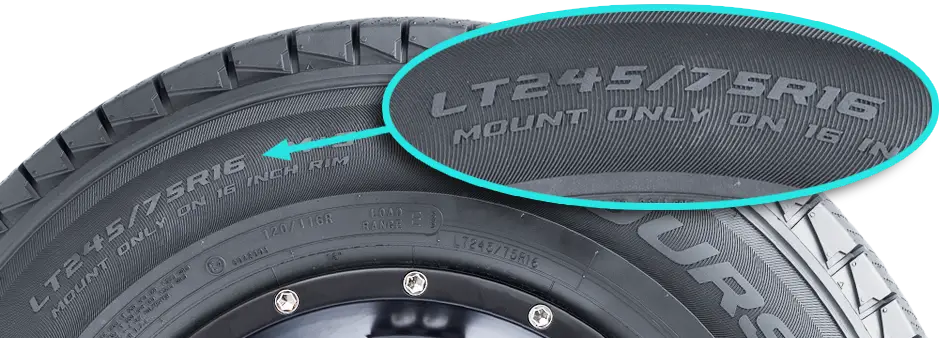
When is the Best Time to Put on Winter/Snow Tires?
To beat the rush and avoid driving in winter conditions without your snow tires, get yours changed out in the fall when temperatures regularly drop below 45º F. In the spring, get your all-season or summer tires installed when temperatures reach 45º F regularly to maximize the life of your winter tires.
Should I Buy Winter Tires with Rims?
To prolong the life of your regular wheels and reduce the cost of seasonal tire changeovers, consider getting your winter tires installed on a separate set of winter or steel wheels. This may require a separate set of TPMS sensors. At Les Schwab, when your tires are mounted to their own wheels, your seasonal tire changeovers are free. Plus, those changeovers can often go a lot faster, saving you time.
Get Your Winter Tires and Snow-safety Advice at Les Schwab
Some all-season tires are marketed as working equally well in summer and winter. That may be true in dry, mild climates where the seasons don’t vary. But for confident traction, braking and control on snow and ice, you need a dedicated set of winter tires featuring the Three-Peak Mountain Snowflake (3PMSF) icon. The professionals at Les Schwab can show you all of your options and help you get the right snow tires for your vehicle, along with America’s Best Tire Warranty.
Want more tips on winter road safety? See 19 Winter Driving Resources You Can’t Do Without.
What you need to know
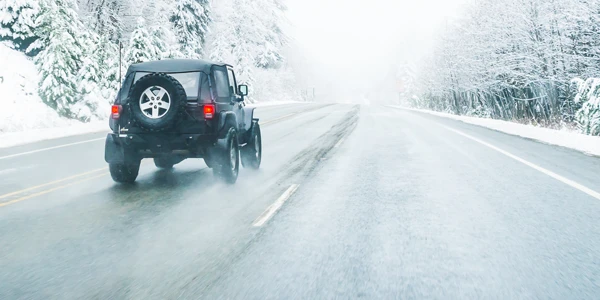
Are All-Season or All-Weather Tires Okay in the Snow?
Understand the differences between all-season, all-weather, and winter tires and match the best tire to your winter driving needs.
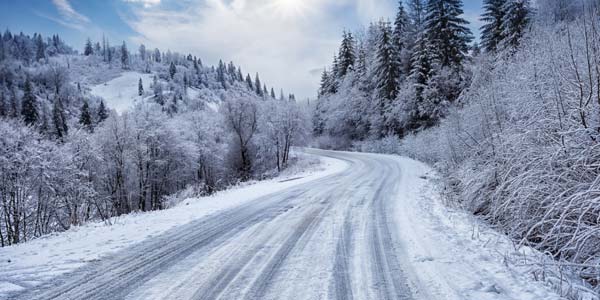
Are All-Terrain (A/T) and Mud Tires (M/T) Good in the Snow?
How do all-terrain and mud tires perform in snow? Learn if they’re suitable for winter driving, or if other options are a better fit.

When to Choose All-Terrain Tires or All-Weather Tires
Wondering what the difference between all-terrain and all-weather tires is? Read this article to find out the key differences, and which tire suits you best.

